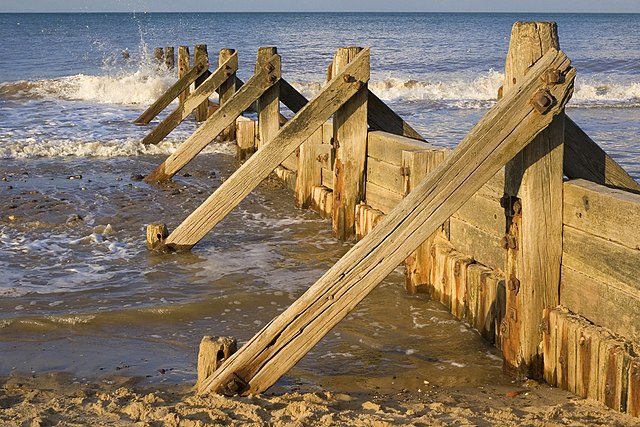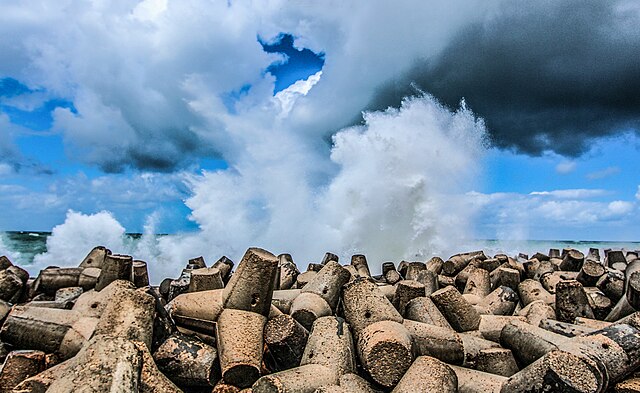Coastal management is defence against flooding and erosion, and techniques that stop erosion to claim lands. Protection against rising sea levels in the 21st century is crucial, as sea level rise accelerates due to climate change. Changes in sea level damage beaches and coastal systems are expected to rise at an increasing rate, causing coastal sediments to be disturbed by tidal energy.
Oosterscheldekering sea wall, the Netherlands.
Groyne at Mundesley, Norfolk, UK
Cement beach reinforcements in on the coast of Alexandria, Egypt to prevent further erosion of coastline that is vulnerable to subsidence.
Figure 1. A diagram representing the spatial relationship between many of the commonly used indicators.
A flood is an overflow of water that submerges land that is usually dry. In the sense of "flowing water", the word may also be applied to the inflow of the tide. Floods are of significant concern in agriculture, civil engineering and public health. Human changes to the environment often increase the intensity and frequency of flooding. Examples for human changes are land use changes such as deforestation and removal of wetlands, changes in waterway course or flood controls such as with levees. Global environmental issues also influence causes of floods, namely climate change which causes an intensification of the water cycle and sea level rise. For example, climate change makes extreme weather events more frequent and stronger. This leads to more intense floods and increased flood risk.
Urban flooding in a street in Morpeth, England
View of flooded New Orleans in the aftermath of Hurricane Katrina
Flooding of a creek due to heavy monsoonal rain and high tide in Darwin, Northern Territory, Australia
Flood in Jeddah, covering the King Abdullah Street in Saudi Arabia








